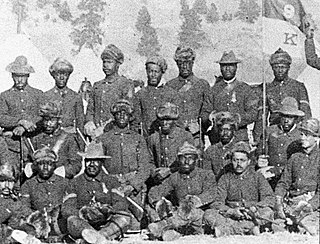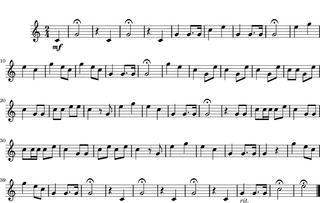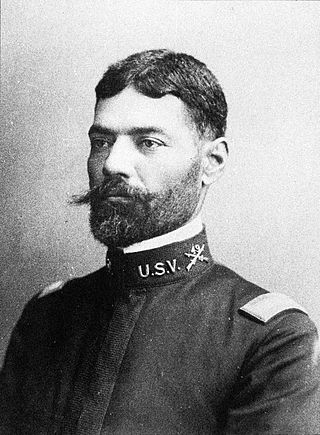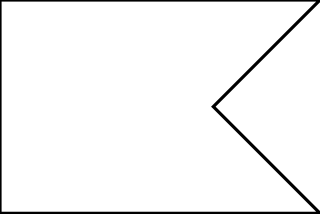A Trumpeter (abbreviation: Tptr) is a regiment specific, descriptive name given to Privates in the British Army. It is used for trumpeters in the Household Cavalry and was formerly used in all other cavalry regiments.
A Trumpeter (abbreviation: Tptr) is a regiment specific, descriptive name given to Privates in the British Army. It is used for trumpeters in the Household Cavalry and was formerly used in all other cavalry regiments.

Dragoons were originally a class of mounted infantry, who used horses for mobility, but dismounted to fight on foot. From the early 17th century onward, dragoons were increasingly also employed as conventional cavalry and trained for combat with swords and firearms from horseback. While their use goes back to the late 16th century, dragoon regiments were established in most European armies during the 17th and early 18th centuries; they provided greater mobility than regular infantry but were far less expensive than cavalry.
A private is a soldier, usually with the lowest rank in many armies. Soldiers with the rank of private may be conscripts or they may be professional (career) soldiers.
A company is a military unit, typically consisting of 100–250 soldiers and usually commanded by a major or a captain. Most companies are formed of three to seven platoons, although the exact number may vary by country, unit type, and structure.
A trumpeter is a musician who plays the trumpet.

A troop is a military sub-subunit, originally a small formation of cavalry, subordinate to a squadron. In many armies a troop is the equivalent element to the infantry section or platoon. Exceptions are the US Cavalry and the King's Troop Royal Horse Artillery where a troop is a subunit comparable to an infantry company or artillery battery. Historically the remainder of the Royal Horse Artillery used the term troop in the same manner but they eventually aligned with the rest of the Royal Regiment of Artillery in referring to troops as subordinate to artillery batteries.
La Grande Armée was the main military component of the French Imperial Army commanded by Emperor Napoleon Bonaparte during the Napoleonic Wars. From 1804 to 1808, it won a series of military victories that allowed the French Empire to exercise unprecedented control over most of Europe. Widely acknowledged to be one of the greatest fighting forces ever assembled, it suffered enormous losses during the disastrous invasion of Russia in 1812, after which it never recovered its strategic superiority.

Yeomanry is a designation used by a number of units or sub-units in the British Army's Army Reserve which are descended from volunteer cavalry regiments of the British Army. These units and sub-units serve in a variety of different military roles.
The Household Cavalry (HCav) is made up of the two most senior regiments of the British Army, The Life Guards and The Blues and Royals. These regiments are divided between the Household Cavalry Regiment stationed at Wing Barracks in Wiltshire and the ceremonial mounted unit, the Household Cavalry Mounted Regiment, garrisoned at Hyde Park Barracks in London. The Household Cavalry is part of the Household Division and is the King's official bodyguard. Although the Household Cavalry Regiment is armoured, it is not part of the Royal Armoured Corps.

Tommy Atkins is slang for a common soldier in the British Army. It was certainly well established during the nineteenth century, but is particularly associated with the First World War. It can be used as a term of reference, or as a form of address. German soldiers would call out to "Tommy" across no man's land if they wished to speak to a British soldier. French and Commonwealth troops would also call British soldiers "Tommies". In more recent times, the term Tommy Atkins has been used less frequently, although the name "Tom" is occasionally still heard; private soldiers in the British Army's Parachute Regiment are still referred to as "Toms".

"Other ranks" is the term used to refer to all ranks below officers in the British Army and the Royal Marines. It includes warrant officers, non-commissioned officers ("NCOs") and ordinary soldiers with the rank of private or regimental equivalent. Officers may, in speaking, distinguish themselves from those "in the ranks".

The "Last Post" is either an A or a B♭ bugle call, primarily within British infantry and Australian infantry regiments, or a D or an E♭ cavalry trumpet call in British cavalry and Royal Regiment of Artillery, and is used at Commonwealth military funerals, and ceremonies commemorating those who have died in war.

The United States Cavalry, or U.S. Cavalry, was the designation of the mounted force of the United States Army by an act of Congress on 3 August 1861. This act converted the U.S. Army's two regiments of dragoons, one regiment of mounted riflemen, and two regiments of cavalry into one branch of service. The cavalry branch transitioned to the Armored Forces with tanks in 1940, but the term "cavalry", e.g. "armored cavalry", remains in use in the U.S. Army for mounted reconnaissance, surveillance, and target acquisition (RSTA) units based on their parent Combat Arms Regimental System (CARS) regiment. Cavalry is also used in the name of the 1st Cavalry Division for heraldic/lineage/historical purposes. Some combined arms battalions are designated as armor formations, while others are designated as infantry organizations. These "branch" designations are again, heraldic/lineage/historical titles derived from the CARS regiments to which the battalions are assigned.
The Household Cavalry Mounted Regiment (HCMR) is a cavalry regiment of the British Army tasked primarily with ceremonial duties. Part of the Household Division, it is classed as a regiment of guards, and carries out mounted ceremonial duties on State and Royal occasions. The HCMR is one of two operational units that form the Household Cavalry (HCav), the other being the Household Cavalry Regiment (HCR), a formation reconnaissance regiment, with front-line combat duties.

The 1st Continental Light Dragoons, also known as Bland's Horse, was a mounted regiment of the Continental Army organized between 13 June and 10 September 1776 in Williamsburg, Virginia. It was made up of men from eastern and northern Virginia for service with the Continental Army.

Edward Lee Baker Jr. was an African-American United States Army Captain who received the Medal of Honor for actions during the Spanish–American War. While under fire, he rescued a wounded soldier from drowning.

In flag terminology, a swallowtail is either

The Regiment of Mounted Grenadiers "General San Martín" is the name of two Argentine Army regiments of two different time periods: a historic regiment that operated from 1812 to 1826, and a modern cavalry unit that was organized in 1903.

The Mamelukes of the Imperial Guard were a cavalry unit that served in Napoleon I’s Imperial Guard during the Napoleonic Wars. Originally made up of Mameluk slave soldiers, the unit eventually was mostly recruited from a wide mixture of Middle Eastern and European soldiers. Originally only mustering a single squadron, a second squadron would be raised from European cavalrymen in 1813, both squadrons served under the Regiment of Chasseurs a Cheval of the Imperial Guard. The various spellings of the squadron's title include Mamelukes, Mamluks and Mamelouks.

A mounted band is a military or civilian musical ensemble composed of musician playing their instruments while being mounted on an animal. The instrumentation of these bands are limited, with the musician having to play his/her instrument, as well as steer the animal to the designated location. Most mounted bands, therefore, use instruments that can easily be held, such as bugles, horns, and Fanfare trumpets. Timpani and glockenspiels are also a common feature, usually located at the head of a band. Although a band that is mounted on any member of the families Equidae and Camelidae are considered to be a mounted band, horses are most commonly used, mostly being employed in military bands in Europe, North and South America, and some parts of Asia.